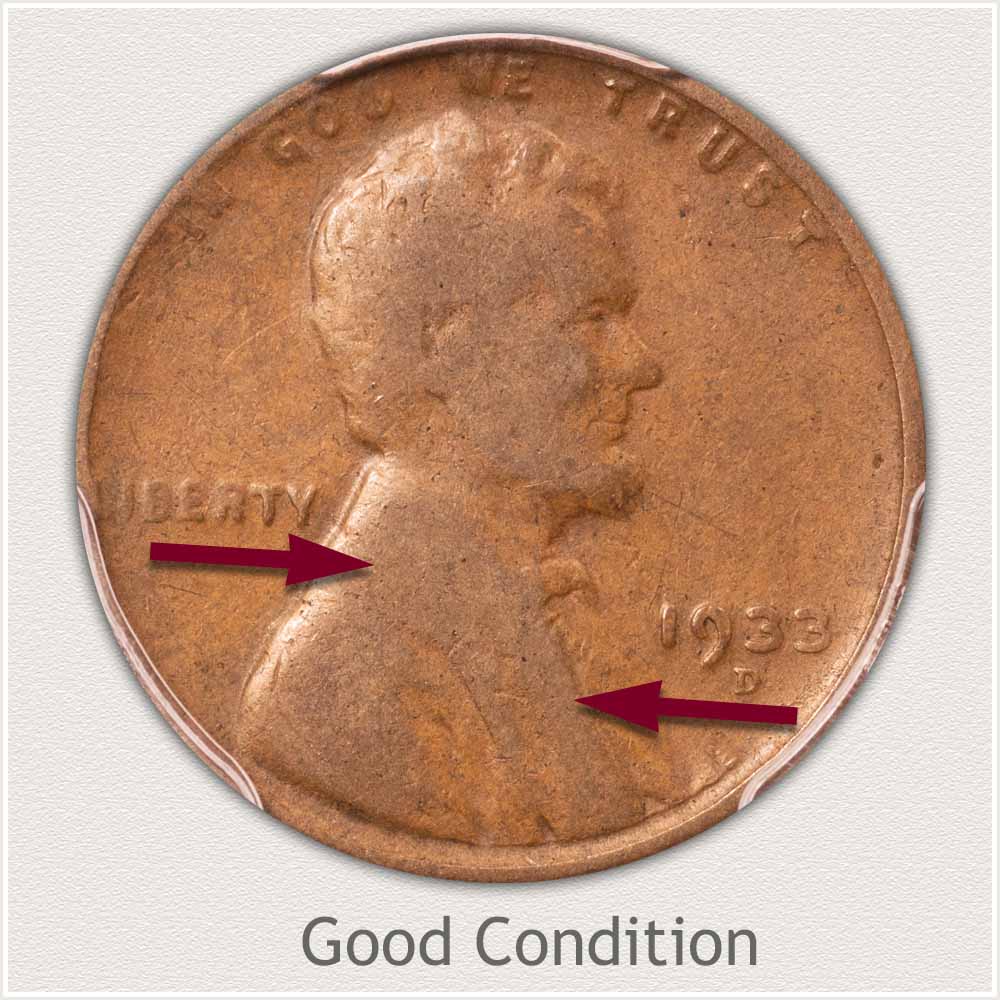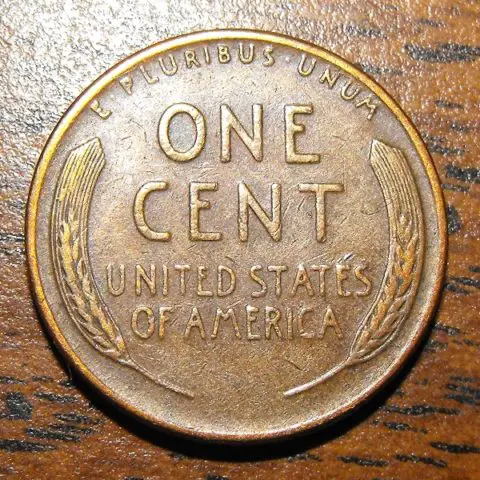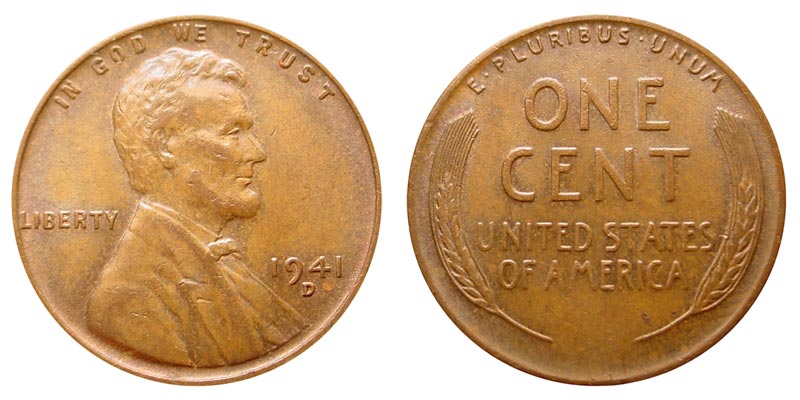- 1 cent 1941 prices and values. The value of a canadian coin depends on several factors such as quality and wear, supply and demand, rarity, finish and more.
- USA Coin Book Estimated Value of 1941-D Lincoln Wheat Penny is Worth $0.19 in Average Condition and can be Worth $4.30 to $6.32 or more in Uncirculated (MS+) Mint Condition. Click here to Learn How to use Coin Price Charts. Also, click here to Learn About Grading Coins.
- Lincoln Penny value listed. A step by step approach is use to evaluate and identify variety, judge grade and determine how much wheat pennies are worth. Images visualize each important step. Value chart lists all dates in the wheat penny series.
- Details, specifications, values and general information for the 1941 George VI South African Bronze Penny. Also find this coin and many others at the best prices.

1941 United States one cent value. What is a 1941 US penny worth? (San Francisco mint variety) Value, specifications, and images for the 1941 Lincoln wheat one cent coin from the United States of America.
Coin Values Moving with Precious Metals: Up-Dated 2/8/2021: Gold $1813 Silver $26.90
1940 penny value is listed on the chart in distinct categories. Of first importance is Date and Mint Mark variety.
Mint marks identify the branch mint striking the coin. Different values are attached depending on mint.
Condition is next evaluated. A process of separating the lower condition coins finds 1940 wheat pennies worth a premium over average quality coins.
Mint Mark and Grading Condition are explored in-depth following value chart.
Steps Leading to Value:
- Step 1: Date and Mintmark Variety – Identify each date and its mintmark variety. Production totals vary and result in availability of each variety.
- Step 2: Grading Condition – Judge condition to determine grade.
- Step 3: Special Qualities – Certain elements either enhance or detract from value.
| 1940 Lincoln Penny Value | ||||
|---|---|---|---|---|
| Condition of Coin | ||||
| Date | Good | Fine | Extremely Fine | Uncirculated |
| 1940 Lincoln Penny Value Up-Dated | 2021 | |||
| 1940 | $0.02 | $0.04 | $0.05 | $1.48 |
| 1940 D | $0.02 | $0.04 | $0.05 | $2.84 |
| 1940 S | $0.03 | $0.04 | $0.13 | $2.44 |

First step in the value process is identifying the correct variety of 1940 penny.
Confirm date and mint combination. Images pinpoint location of mint marks and descriptions highlight differences.
An additional step of Grading condition is preformed to narrow the value of each variety.
Stages of wear are imaged and used to match your coin to a standard. Subtle details are described. First impressions are important. Light wear on the coin with ample detail remaining quickly spots a premium wheat penny.
Begin by separating Date Mint Mark variety.
Step 1: Date and Mintmark Combination
1940 Lincoln Cent Mintmark Varieties
Three varieties of cents were struck in 1940. The decade began with large qualities of pennies produced in the year, over 781,000,000 as reported in mint records. Identifying variety finds differences in 1940 penny value.
1940 Lincoln Penny
No Mintmark Under Date: Philadelphia Mint Struck the Coin
1940 production of cents at Philadelphia is 6th highest of any wheat cent year. 586,825,872 struck (calendar year records mint report). Rarity scale is Abundant. Circulated examples dominate existing coins remaining. Lightly worn coins are in demand by young collectors starting collections.
1940 pennies, in any condition without noticeable marks are favored. A lack of dents to the rim and prominent areas - Lincoln's portrait - are coins solid within a grade.
1940-D Lincoln Penny
'D' Mintmark Under Date: Denver Mint Struck the Coin

Denver struck the fewest of the three varieties of 1940 wheat pennies. Higher value is noted with coins lightly circulated and better condition.
These old pennies tend to accumulate debris within the lettering and date areas, a pleasing coin is noted as having little buildup or problems.
1940-S Lincoln Penny
'S' Mintmark Under Date: San Francisco Mint Struck the Coin
Rarity scale: Abundant. San Francisco mint struck 112,940,000 cents in 1940. 10th highest 'S' mint total of the entire wheat penny series. Popularity of pennies and 'S' mint examples supports value.
Large supplies are available to collectors. These are inspected for quality. Even coloring of a light tan to brown are a favorite. Spots and areas of darkness detract from eye appeal and are discounted.
Step 2: Judge Condition to Identify Grade
Judge Condition and 1940 Penny Value
Grading judges amount of wear appearing on a coin's surface. A set of standard Grades defines the stages of condition. Collectors use grades in the value process and are listed on the charts.
Handel your coins by the edges avoiding touching the surface. Copper picks up and reacts to most substances. From this point on preservation maintains value.
Uncirculated Grade: Collectors place a steady demand on Mint State - uncirculated 1940 wheat pennies. Each is inspected closely confirming no wear to the surface. A coin without wear is given a grade of uncirculated condition.

High relief areas are judged first. Luster, a fine texture, the result of the striking process covers the surface and imparts the shine of a new coin. Lincoln's cheek just below the eye is located centrally and prone to first signs of wear. Judge the cheek as it extends towards the ear, no dulling and smoothness is needed to achieve mint state status.
Eye appeal of the 1940 penny example is high because of its original freshly minted color and luster. Although subjective, a lustrous coin is popular with collectors and awarded premium value. Note the fields of the coin are free of spots and any distracting marks.
Extremely Fine Grade: With a light amount of wear evenly distributed over the surface, a wheat cent is graded Extremely Fine condition. Wear must not cause any major design elements to connect. Hair curls and facial features remain well rounded and raised.
Viewing Lincoln's cheek, the area just below his eye is slightly flattened. Also, a small area is just showing wear in front of the ear, but is well rounded. Between his cheek and ear remains a slight depression, wear is confined to the high areas.
Light brown toning covers the example wheat cent. No large marks distract the eye. A couple of small spots are noted in the field in front of Lincoln. Legends and date are sharp and well defined. A nice example of the extremely fine grade.
Fine Grade: Moderate wear has reduced high points of design to noticeable flat areas on a wheat cent in Fine grade. Lincoln's hair has merged in places just above the ear and his coat shows wide flatness along the lapel.
Just in front of Lincoln's ear is a flattened area that now connects to the smooth cheek below the eye. A once rounded profile to his cheek in now a wide flat area. A solid grade Fine example show a separation of cheek and jaw.
Strong details remaining in the hair curls, bow-tie, and coat add to the overall nice 'look' of the example wheat cent. A young collector would consider the coin as part of a collection.
Good Grade: Heavy wear covering the entire central portion of a wheat cent places it in the Good grade. Lincoln's hair is now mostly flat, coat is lacking detail along the back and shoulder, and facial features are one smooth plane.
Roundness and height to Lincoln's cheek is flat and merged with his ear. Any depression separating the two is gone. Wear has also connected the majority of design to his jaw.
Improving the example coin's marketability is the nice even toning. Light brown color indicates a well-preserved coin once it was removed from circulation. Lincoln's portrait remains bold and fields lack any large marks. Despite heavy wear, a pleasing example of a good grade cent.
Video Grading Lincoln Wheat Pennies
Grading Lincoln Wheat Pennies covers additional points in greater detail when judging condition. Both the obverse and reverse of these wheat pennies have many areas to examine to help establish and confirm a grade. When grading is complete you are in a position to realize true market value.
Step 3: Special Qualities Enhancing Value
Safe Coin Storage Protects Future Value
One of the factors aiding in the popularity of wheat cents is their availability. Billions were produced and millions were saved. Beginning collectors are attracted to the series because of easy budget requirements assembling circulated sets. Appeal is extended to advanced collectors seeking elusive mint state examples in top condition.
Every wheat cent shows the level of preservation maintained by how they were stored over the years. Original bright copper remains brilliant after decades and nice vintage toning is attractive. Protected from handling results in keeping coins appealing.
Left exposed, reactions with their surroundings leaves unappealing surfaces. Uneven coloring is distracting and the green verdigris is destroying the surface. Both avoidable.
Any wheat cent worth above minimum value of a few cents is protected by separating individually. Quantities of average, minimum value examples, are well preserved by storing in coin tubes. Each are special made for the hobby to safely store coins. A 2x2 Saflip (two pockets separate coin from label) and HE Harris coin tube are pictured. The article: Providing Safe Coin Storage explores in greater detail.
ReferencesUS Mint. 1941 US Mint Annual Report https://nnp.wustl.edu/library/publisherdetail/51
Federal Trade Commission. Investing in Collectible Coins. https://www.consumer.ftc.gov/articles/0136-investing-collectible-coins
Coin Values CoinStudy Articles
Date by Date
In Depth Lincoln Penny Value
Early Era 1909 to 1933
1909 | 1915 | 1921 | |
1910 | 1916 | 1922 | 1928 |
1911 | 1917 | 1923 | 1929 |
1912 | 1918 | 1924 | 1930 |
1913 | 1919 | 1925 | 1931 |
1914 | 1920 | 1926 | 1932 |
1933 |
Date by Date
In Depth Lincoln Penny Value
Second Era 1934 to 1958
1934 | 1940 | 1946 | |
1935 | 1941 | 1947 | 1953 |
1936 | 1942 | 1948 | 1954 |
1937 | 1943 | 1949 | 1955 |
1938 | 1944 | 1950 | 1956 |
1939 | 1945 | 1951 | 1957 |
1958 |
Value chart spans the Wheat design years 1909 through 1958 of Lincoln cents. From uncirculated coins collected by advances collectors to worn examples an affordable collection popular with young collectors. Identify date, mint and condition; a wide range of values is found and identified.
Rare pennies are identified in series from wheat cents back to the early years of the US Mint. These one-cent and half-cents coins first struck in 1793 have a number of stand-out issues.
★Coin Values Discovery finds 1940 Penny Value and...
All US coin values. Recognize your old coins using the image links leading to value charts. Date Mintmark Condition are considered; all described and imaged within each series. Surprising value is often found in the smallest of detail.
Bronze Composite Penny
What This Coin Looks Like (Obverse, Reverse, Mint Mark Location, Special Features, etc.):
| Good (G-4) | Very Good (VG-8) | Fine (F-12) | Very Fine (VF-20) | Extremely Fine (EF-40) | About Uncirculated (AU-50) | Uncirculated (MS-60) | Uncirculated (MS-63) | Proof (PR-63) |
|---|---|---|---|---|---|---|---|---|
| $0.16 | $0.19 | $0.21 | $0.53 | $1.08 | $3.14 | $4.30 | $6.32 | - |
1941 Penny Value
USA Coin Book Estimated Value of 1941-D Lincoln Wheat Penny is Worth $0.19 in Average Condition and can be Worth $4.30 to $6.32 or more in Uncirculated (MS+) Mint Condition. Click here to Learn How to use Coin Price Charts. Also, click here to Learn About Grading Coins. The Melt Value shown below is how Valuable the Coin's Metal is Worth (bare minimum value of coin). Click here to see the Melt Value of every US Coin.MELT VALUE: $0.0241
1941 Penny Value Copper

23 items found
1941 Penny Value Today
- Seller: pchuck
Condition: AU - $1.50
- $2.50
- Seller: OldCoinsNeedNewHome
Condition: EF - Seller: OldCoinsNeedNewHome
Condition: AU - $50.00
or Best Offer
Free Shipping - Seller: stephen11
Condition: BU - $8.75
- $0.95
- Seller: whcwa
Condition: AU-40 - Great coin with nice patina, good for someone's collection.Seller: TaddsCoins
Certification Agency: Other
Condition: EF-40 - $1.00
- $1.00
- $7.50
- $1.45Seller: Bravados
Certification Agency: Other
Condition: VG 08 & VG 10 - $4.95
- $7.95
- $2.75Seller: hobbyhaus
Condition: Uncirculated with spots/marks - Seller: ondahcreek
- $6.99
- $0.09
or Best Offer - Seller: whcwa
Condition: Circulated - Seller: whcwa
Condition: AU-40